#Seyss
Explore tagged Tumblr posts
Text
Enjoying Burgundy wine without the high prices

View On WordPress
#Armand Rousseau#Auburt de Villaine#Bourgogne#burgundy#Christophe Roumier#Domaine Bruno Clavelier#domaine de la romanée Conti#Dominique Lafon#dujac#Jacques Seysses#Lalou Bize Leroy#Meo Camuzet#Olivier Leflaive#Simon Bize#Sylvain Chathiard
0 notes
Text
Le 1er octobre 1946, tombait le verdict du procès de Nuremberg, avec condamnation à la pendaison de Göring, von Ribbentrop, Keitel, Kaltenbrunner, Rosenberg, Frank, Frick, Streichner, Sauckel, Jodl, Seyss-Inquart et Bormann (en fuite).
Julius Streichner était le journaliste…
4 notes
·
View notes
Text
“Free Palestine! Free Sudan!”
You do realize the people you want freed in “Palestine” are the people Sudan needs to be freed from, right? All of Sudan’s problems are the work of Arab Muslims, most of them I think even specifically Levantines like Palestinians are.
“Down with Hitler! Up with Seyss-Inquart!”
9 notes
·
View notes
Text
Today the Church remembers St. Edith Stein, Martyr.
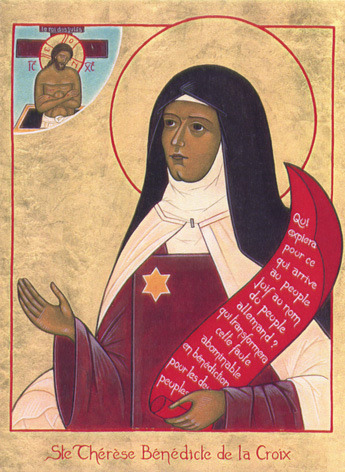
Ora pro nobis.
St. Edith (12 October 1891 – 9 August 1942) was a brilliant philosopher who stopped believing in God when she was 14. Even so, she became so captivated by reading the autobiography of Teresa of Avila that she began a spiritual journey that led to her baptism in 1922. Twelve years later she imitated Saint Teresa by becoming a Carmelite, taking the name Teresa Benedicta of the Cross.
Born into a prominent, religious Jewish family in Breslau, Germany—now Wrocław, Poland—Edith abandoned Judaism in her teens. Moved by the tragedies of World War I, in 1915, she took lessons to become a nursing assistant and worked in an infectious diseases hospital. As a student at the University of Freiburg, she became fascinated by phenomenology–an approach to philosophy. Excelling as a protégé of Edmund Husserl, one of the leading phenomenologists, Edith earned a doctorate in philosophy in 1916. She continued as a university teacher until 1922, when she moved to a Dominican school in Speyer; her appointment as lecturer at the Educational Institute of Munich ended under pressure from the Nazis.
She was baptized on 1 January 1922 in the Roman Catholic Church. At that point, she wanted to become a Discalced Carmelite nun but was dissuaded by her spiritual mentor, the abbot of Beuron Archabbey. She then taught at a Catholic school of education in Speyer. As a result of the requirement of an "Aryan certificate" for civil servants promulgated by the Nazi government in April 1933 as part of its Law for the Restoration of the Professional Civil Service, she had to quit her teaching position.
She was finally admitted as a postulant to the Discalced Carmelite monastery in Cologne on 14 October, on the first vespers of the feast of Saint Teresa of Ávila, and received the religious habit as a novice in April 1934, taking the religious name Teresia Benedicta a Cruce (Teresia in remembrance of Teresa of Ávila, Benedicta in honour of Benedict of Nursia). She made her temporary vows on 21 April 1935, and her perpetual vows on 21 April 1938.
The same year, Teresa Benedicta a Cruce and her biological sister Rosa, by then also a convert and an extern (tertiary of the Order, who would handle the community's needs outside the monastery), were sent to the Carmelite monastery in Echt, Netherlands, for their safety. Ultimately, she would not be safe in the Netherlands. The Dutch Bishops' Conference had a public statement read in all churches across the nation on 20 July 1942 condemning the genocidal racism of National Socialism. In a retaliatory response, on 26 July 1942, the Reichskommissar of the Netherlands, Arthur Seyss-Inquart, ordered the arrest of all Jewish converts who had previously been spared. Along with two hundred and forty-two baptized Jews living in the Netherlands, Stein and her sister Tosa were arrested by the SS on 2 August 1942. Stein and her sister Rosa were imprisoned at the concentration camps of Amersfoort and Westerbork before being moved to Auschwitz. A Dutch official at Westerbork was so impressed by her sense of faith and calm that he offered her an escape plan. Stein vehemently refused his assistance, stating: "If somebody intervened at this point and took away my chance to share in the fate of my brothers and sisters, that would be utter annihilation."
On 7 August 1942, early in the morning, 987 Jews were moved to the Auschwitz concentration camp. They, along with Teresa Benedicta and her sister Rosa, were murdered by the National Socialists in a gas chamber in Auschwitz on 9 August 1942.
Pope St. John Paul II beatified Teresa Benedicta of the Cross in 1987 and canonized her 12 years later, and named her one of the six patron saints of Europe.
The miracle that was the basis for her canonization is the cure of Benedicta McCarthy, a little girl who had swallowed a large amount of paracetamol (acetaminophen), which causes hepatic necrosis. The young girl's father, Emmanuel Charles McCarthy, a priest of the Melkite Greek Catholic Church, immediately called together relatives and prayed for Teresa's intercession. Shortly thereafter, the nurses in the intensive care unit saw her sit up, completely healthy. Ronald Kleinman, a pediatric specialist at Massachusetts General Hospital in Boston who treated the girl, testified about her recovery to church tribunals, stating: "I was willing to say that it was miraculous." McCarthy would later attend Sr. Teresa Benedicta's canonization.
The writings of Edith Stein fill 17 volumes, many of which have been translated into English. A woman of integrity, she followed the truth wherever it led her. One of the more profound things that she wrote was,
“Do not accept anything as truth that lacks Love. Do not accept anything as love which lacks truth. One without the other is a destructive lie.”
Almighty God, by whose grace and power your holy martyr Edith triumphed over suffering and was faithful even to death: Grant us, who now remember her in thanksgiving, to be so faithful in our witness to you in this world, that we may receive with her the crown of life; through Jesus Christ our Lord, who lives and reigns with you and the Holy Spirit, one God, forever and ever.
Amen.
2 notes
·
View notes
Text
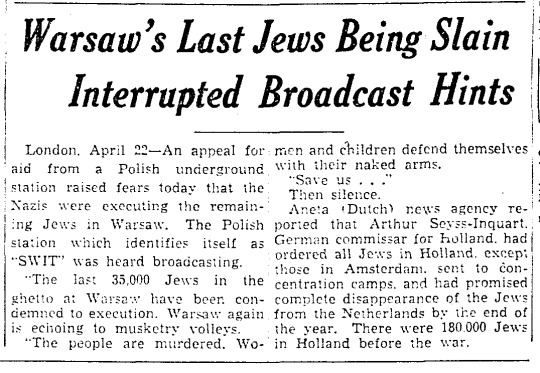
"Warsaw's Last Jews Being Slain Interrupted Broadcast Hints," Toronto Star. April 22, 1943. Page 2. --- London. April 22 - An appeal for aid from Polish underground station raised fears today that the Nazis were executing the remaining Jews in Warsaw. The Polish station which identifies itself as "SWIT" was heard broadcasting.
"The last 35,000 Jews in the ghetto at Warsaw have been condemned to execution. Warsaw again is echoing to musketry volleys.
"The people are murdered. Women and children defend themselves with their naked arms.
"Save us...."
Then silence.
Aneta (Dutch) news agency reported that Arthur Seyss-Inquart, German commissar for Holland, had ordered all Jews in Holland, except those in Amsterdam. sent to concentration camps, and had promised complete disappearance of the Jews from the Netherlands by the end of the year. There were 180.000 Jewsin Holland before the war.
#warsaw ghetto#warsaw ghetto uprising#warsaw#occupied poland#german occupation of poland#world war II#nazi germany#nazi empire#antisemitism#holocaust#shoah
1 note
·
View note
Text
Psyche Revived by Cupid's Kiss. Sculpture by Antonio Canova
Ugolino and his Sons. Sculpture by Jean-Baptiste Carpeaux
The Rape of Proserpina. Sculpture by Gian Lorenzo Bernini
The Return. Sculpture by Auguste Seysses
The Sacrifice, at the Vittoriano. Sculpture by Leonardo Bistolfi
Memorial Effigies of Lord Edward Noel and Lady Juliana. Sculpture by Joshua Marshal
Tomb of Nicola Bertollo. Sculpture by Giovanni Scanzi and Luigi Brizzolara
Cupid and Psyche. Sculpture by Antonio Canova
Berenice's Tresses. Sculpture by Ambrogio Borghi
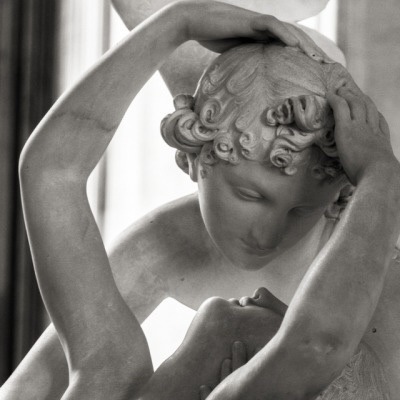
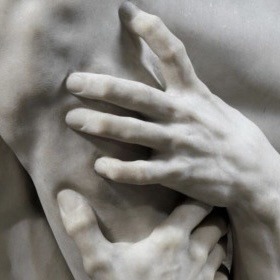
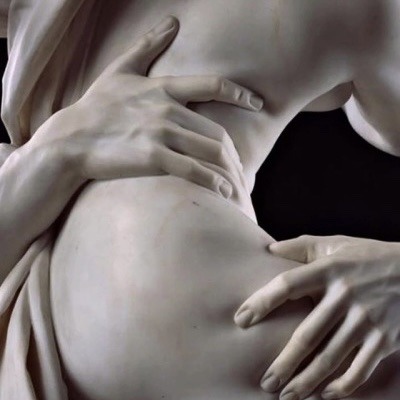
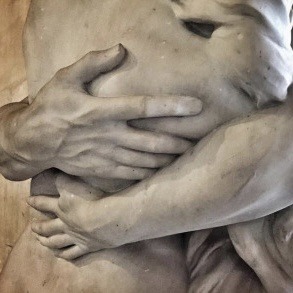



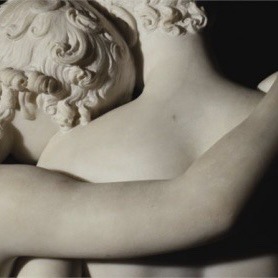
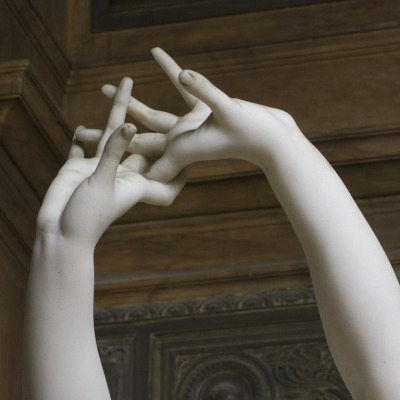
Sixteen lovers and one who craves - stone softness
22K notes
·
View notes
Text
Winterhulp-Winter Relief: Charit, but for who?
During the German occupation of the Netherlands, the Austrian lawyer and Nazi Arthur Seyss-Inquart was the leader of the Netherlands. In October 1940, he established “Winterhulp Nederland” (Winter Relief Netherlands), modeled after a German example. The German occupiers hoped this initiative would create a favorable impression of the Germans among the Dutch population. Winterhulp Nederland was a…

View On WordPress
1 note
·
View note
Text
Dynatel Systems (804 868 248)
Dynatel Systems (804 868 248) offers scalable digital infrastructure and custom software to streamline enterprise communications.
0 notes
Text
Mélitine Morel remporte 4 titres de Championne de France !

Ce week-end se tenait les Championnats de France à Seysse dans le sud-ouest, Mélitine Morel, du Ski Nautique Club Montbéliardais, a gagné et de loin, les 4 titres de Championne de France en slalom, figures, sauts et overall ! Sa dernière médaille a été remise par Patrice Martin qui arrête à la fin de l'année son mandat de Président de Fédération. Dans la série des bonnes nouvelles, mais sans surprise, elle a reçu son engagement pour les Euros qui auront lieu le week-end du 21 août 2024 ainsi que sa dotation vestimentaire en Equipe de France. Été très chargé pour la jeune montbéliardaise, car dans 15 jours elle sera au Canada, à Calgary, surclassée, car rappelons qu'elle n'aura que 14 ans lors de ce Championnat du Monde le 2 août 2024. Read the full article
0 notes
Text
Amaury Brelet : « A la prison de Toulouse-Seysses, ~50% des détenus sont étrangers, presque tous Algériens et clandestins »
Vu sur F de Souche 🔴 A la prison de Toulouse Seysses, ~50% des détenus sont étrangers, presque tous Algériens et clandestins. #surpopulation https://t.co/a4vZrlsSPK— Amaury Brelet (@AmauryBrelet) July 13, 2024 Continue reading Amaury Brelet : « A la prison de Toulouse-Seysses, ~50% des détenus sont étrangers, presque tous Algériens et clandestins »
1 note
·
View note
Text
La Scultura del giorno: il Ritorno di Auguste Seysses
La scultura del giorno che vi propongo oggi è il Ritorno dello scultore francese Auguste Seysses. L’opera fu realizzata dall’artista nel 1898 e oggi è custodita presso il Musée des Augustins in Francia. L’opera fu presentata dall’artista all’Esposizione Universale di Parigi del 1900 e fu molto apprezzata sia dal pubblico e dalla critica. Raffigura un abbraccio appassionato tra due giovani dopo…

View On WordPress
#antonietta bandelloni#art#artblogger#arte#artinfuencer#bellezza#capolavoro#english#La scultura del giorno#sanvalentino
0 notes
Text





Hi guys...anyone w a FULL Rosenberg detention report (also includes the one Goering has in the pic + the thumbprint thingy) and also a Frick , Seyss Inquart and Hans Frank detention report pls dm me ( and also Kaltenbrunner's detention report, IF he has one )
5 notes
·
View notes
Note
do you think oncestasia and lorry laurie somethibf like thar. Do you think they know other seuss character kids. Do you. Do you think catgirl in the hat (girl). Red fish and blue fish.... Sam i am jr....
yes yes yes yes!!!!!!!!!!!!!!! oh my gosh. the dr seyss lore..... they're the Seuss Kids. oh my gosh. red fish and. Blue fish <33
#thinking of this#catgirl in the hag IS SO REAL!!!!#she would be friends w kitty#sam i am jr.... what if he hafes green eggs and gam...
1 note
·
View note
Photo




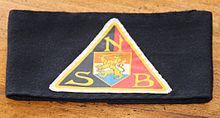



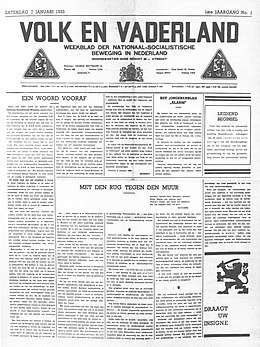
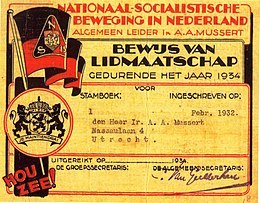
547) Nationaal-Socialistische Beweging der Nederlanden, National Socialist Movement in the Netherlands, Narodowosocjalistyczny Ruch Holenderski – holenderskie narodowosocjalistyczne ugrupowanie polityczne, działające od 1931 roku. NSB zostało założone w 1931 roku w Utrechcie z inicjatywy Antona Musserta, kombatanta I wojny światowej i byłego członka partii liberalnej oraz Cornelisa van Geelkerkena. W jego skład weszło kilka niewielkich nacjonalistycznych, faszystowskich i narodowosocjalistycznych ugrupowań. W 1933 roku zorganizowano w Utrechcie pierwszy zjazd publiczny partii (Landdag), na który przybyło około 600 jej działaczy. Już w 1934 roku władze państwowe wydały zakaz przynależności urzędników państwowych do NSB, zwalczały go również wszystkie Kościoły. W następnym roku w wyborach do parlamentów prowincjonalnych partia uzyskała 7,9% głosów i 2 miejsca w Eerste Kamer. Liczyła wówczas około 47 tysięcy członków – jednak podczas wyborów do Stanów Generalnych w 1937 dostała zaledwie 4,2% głosów (4 miejsca w Tweede Kamer). Ta tendencja spadkowa utrzymała się także w wyborach prowincjonalnych w 1939 (ponownie 4% głosów). Do 1936 w NSB przeważały wpływy włoskich faszystów. Zmieniła to działalność w partii Rosta van Tonningena, który doprowadził do większego zbliżenia z niemiecką NSDAP i SS. Wyrazem tego była audiencja Musserta u Adolfa Hitlera 16 listopada 1936 roku. Głównym organem prasowym NSB był haski dziennik Nationaal Dagblad, redagowany przez Rosta van Tonningena. W latach 1931–1935 istniały paramilitarne bojówki pod nazwą Weerbaarheidsafdeling (WA), jako odpowiednik hitlerowskiego SA, których członkowie byli ubrani na czarno. Partia miała też swoją młodzieżówkę: Nationale Jeugdstorm. Od 1933 działacze NSB stosowali pozdrowienie Hou zee (na podobieństwo Heil Hitler), na swoje określenie używali nazwy kameraad (mężczyźni) i kameraadske (kobiety), a Mussert przyjął tytuł Leidera (podobnie jak hitlerowski Führer). Program NSB nawiązywał do patriotycznych tradycji morskiego imperium Holandii w XVII wieku i uznawał chrześcijaństwo za jedną z podstaw narodowej egzystencji. Partia opowiadała się za stworzeniem silnego rządu, przestrzeganiem narodowego poczucia godności osobistej, wprowadzeniem porządku i dyscypliny w życiu społecznym, politycznym i gospodarczym, solidarnością międzyklasową, priorytetem interesów narodowych nad partykularnymi i grupowych nad jednostkowymi oraz powołaniem korporacji i wprowadzeniem planowania gospodarczego. Jedną z głównych idei NSB było połączenie Holandii z belgijską Flandrią w tak zwaną Wielką Holandię (Dietsland). Po 1936 roku w jej programie pojawiły się silne wątki antysemickie i rasistowskie (do tego czasu jej członkami byli też Żydzi). Zaczęto również popierać agresywną politykę zagraniczną nazistowskich Niemiec i faszystowskich Włoch. Z drugiej strony lider NSB, Anton Mussert, kreował swój wizerunek jako umiarkowanego i pragmatycznego polityka, respektującego demokratyczne reguły życia politycznego, co przyniosło partii sukcesy, zwłaszcza w połowie lat 30. W przeddzień najazdu Niemiec na Holandię władze państwowe zdelegalizowały NSB i internowały prewencyjnie 31 jej działaczy z van Tonningenem na czele (ale bez Musserta). Podczas działań wojennych nie odnotowano żadnych przypadków zdrady ze strony żołnierzy będących członkami NSB; również Mussert potępił i usunął z partii około 100 członków przebywających już od dawna w Niemczech i uczestniczących w dywersyjnych atakach niemieckich spadochroniarzy. Po rozpoczęciu okupacji Mussert zaczął żywić nadzieję zbudowania „Wielkiej Holandii” jako niepodległego państwa pozostającego w sojuszu z III Rzeszą i pod jego prezydenturą. Umacniał go w tym Komisarz Rzeszy w Holandii (stosujący umiarkowany kurs), Arthur Seyss-Inquart. NSB otrzymało od Niemców finansowe i ideologiczne wsparcie, dzięki czemu liczba jej członków wzrosła w połowie 1941 roku do około 100 tysięcy. W sierpniu tego roku reaktywowano paramilitarne bojówki Weerbaarheidsafdeling, a Mussert przybrał tytuł Wodza (De Leider) ruchu. W tym czasie zaangażował się on, wraz z partią, w akcję rekrutacyjną do dwóch pułków Waffen-SS – „Westland ”i „Nordwest” – a następnie Ochotniczego Legionu Holenderskiego, wysłanego na front wschodni do walki z Sowietami. NSB odgrywało podstawową rol�� na poziomie niższej administracji: wszyscy nowi burmistrzowie miast byli członkami partii. Jednocześnie coraz większego znaczenia w partii nabierał van Tonningen, który reprezentował pronazistowskie stanowisko i w związku z tym był popierany przez Reichsführera SS Heinricha Himmlera. Uniezależnił on od NSB i jego przywódcy holenderskie SS, pomimo skarg Musserta do Hitlera, i prowadził wielkogermańską propagandę. W grudniu 1942 doszło do spotkania Musserta z Hitlerem, podczas którego ten nie zgodził się na mianowanie lidera NSB szefem kolaboracyjnego rządu, a jedynie uznał w nim wodza narodu holenderskiego. Przeciwny polityce Komisarza Rzeszy, Seyssa-Inquarta, wyższy dowódca SS i Policji, Hans Rauter popierał rywalizujących z Mussertem przedstawicieli radykalnego skrzydła NSB: van Tonningena, van Geelkerena i Feldmeijera (szefa Nederlandsche SS). Stopniowo Mussert tracił kontrolę nad szeregowymi członkami NSB, którzy czynnie współpracowali z niemiecką policją i uprawiali szpiegostwo. Partia, wzorując się na NSDAP, stała się antysemicka i zaczęła brać udział w wystąpieniach przeciwko ludności żydowskiej. Latem 1943 wielu członków NSB wstąpiło do formacji Landwacht Nederland, która pełniła funkcje obrony terytorialnej. Po zajęciu Antwerpii przez aliantów, we wrześniu 1944, większość czołowych działaczy NSB uciekła do Niemiec. Po zakończeniu wojny NSB została zdelegalizowana. Wielu działaczy zostało aresztowanych, a kilku – w tym Antona Musserta – skazano na śmierć.
0 notes






